Rapid Development of a Giant Cardiac Myxoma in a Patient with Carney syndrome: a Case Report
Article Information
Messi P1,2*#, Benzoni G3*#, Bonalumi G1,4, Fatti L5, Heilbron F5, Badano L3,5, Fratianni G5, Moneta A2, Donatelli F1,2
1DISCCO Department UNIMI, Milano, Italy
2IRCCS Ospedale Galeazzi – Sant’Ambrogio, Milano, Italy
3Università degli Studi Milano-Bicocca, Cardiology Residency Program, Italy
4Department of Cardiac Surgery, Centro Cardiologico Monzino, Milan, Italy
5IRCCS Istituto Auxologico-Italiano, San Luca Hospital - Cardiac Rehabilitation Unit, Italy
#Messi and Benzoni equally contributed to this article.
*Corresponding Author: Bonalumi, Department of Cardiovascular Surgery, Centro Cardiologico Monzino-IRCCS, Via Carlo Parea 4, 20100 Milan, Italy; DISCCO Department UNIMI, Milano, Italy
Received: 28 March 2023; Accepted: 12 April 2023; Published: 05 May 2023
Citation: Messi P, Benzoni G, Bonalumi G, Fatti L, Heilbron F, Badano L, Fratianni G, Moneta A, Donatelli F. Rapid Development of a Giant Cardiac Myxoma in a Patient with Carney syndrome: a Case Report. Archives of Clinical and Medical Case Reports. 7 (2023): 187-190.
View / Download Pdf Share at FacebookAbstract
Carney Complex Syndrome is a rare genetic disorder that affects multiple organs and systems, including the endocrine glands, heart, and skin. The transmission of the syndrome is autosomal dominant, the gene involved in the mutation, in more than 60% of cases, is the PRKAR1A gene. We aim to present a 38-year-old female diagnosed with Carney syndrome since 2011. During April 2022, according to the cardiac screening plan, she underwent a transthoracic echocardiography, which did not show any cardiac tumors. However, in December 2022, the patient reported symptoms like dyspnea and palpitations. Immediately a new transthoracic echocardiography was performed, which revealed a large oval mass with heterogeneous echotexture and irregular margins in the left atrium, with a broad base of implantation at the interatrial septum, measuring 5 × 5, 5 cm. The mass cause obstruction to filling because was engaging in systole in the left ventricle. Additionally, a PFO, a common anatomical variant of interatrial septum, was found. The patient underwent cardiothoracic surgery to remove the myxoma and close the PFO via right mini thoracotomy, few days after. The surgery was successful, and the patient had good results in subsequent follow-up. In this article we aim to focus attention on the need to perform echocardiographic follow-up in a short time in patient with a familiar history of neoplasm involving myxoma, to preserve the patient from major compliances, especially reduce the risk of sudden cardiac death.
Keywords
Carney Complex; Myxoma; Cardiac Neoplasm; Atrial Mass; Rapid Growth Myxoma
Article Details
Abbreviations:
PFO: patent foramen ovale; CC: carney complex syndrome
1. Introduction
Carney Complex Syndrome (CNC) is a rare genetic disorder characterized by cardiac myxomas, and schwannomas, multiple endocrine neoplasms with or without endocrine hyperactivity and skin anomalies. The transmission of CNC is autosomal dominant and involve PRKAR1A gene mutation in more than 60% of cases [1]. On average, the diagnosis is made around 20 years old, while cardiac myxoma occurs on average at 30 years [2]. Cardiac myxomas are common feature of the syndrome, and early diagnosis and treatment are essential to prevent complications [3]. Finally, there are rare cases with CNC developing myxoma in organs other than the heart, such as the breasts, female genitals and skin. The most common feature observed in individuals with CNC is freckles that range from pale brown to black. It is common that the number of freckles increases with puberty [4].
The most frequent oncological manifestation of the disease is in the thyroid gland; usually it is a non-productive follicular adenoma. However, patient affected by CNC can manifest during the life different and multiple neoplasm. Oncological manifestations that involve patients with CNC are primary pigmented nodular adrenocortical disease PPNAD, related to Cushing syndrome, Large-cell calcifying Sertoli cell tumors LCCSC, pituitary adenomas producing growth hormone GH and schwannomas. Cardiac myxomas tend to arise at a young age and can be localized in any cardiac chamber with a higher rate of onset in the left atrium, adhering to the interatrial septum. It is important, according to the guidelines, a regular screening of the patients with CNC for the potential insurgence of cardiac myxoma and echocardiography is the gold standard method. Screening has the function of preventing fatal complications such as obstruction of trans-mitral blood flow, embolic phenomena, malignant arrhythmias, and heart failure [1]. In fact, cardiac myxoma is associated with a high risk of sudden death, about 16% of cases of CNC. According to the literature, cardiac myxomas should be diagnosed promptly and for this reason a color Doppler echocardiography should be performed annually o biennially [5, 6]. Otherwise, patients with a history of myxoma should be screened more frequently with echocardiography every 6 months [7].
2. Case Report
We present a case of a 38-years-old female patient with CNC (proband). She is affected by acromegaly and at the age of 27 she undergone surgery for pituitary adenoma. The patient presented the typical pathological phenotype with freckles on her face (Figure 1).
Four of her closest relatives were themselves affected by the syndrome.
The maternal grandfather (GF) died at the age of 64 years, he was affected by the mutation, he presented with the cutaneous manifestations such as freckles and cutaneous angiomyxomas and Two of GF's five children were affected. One of these was the patient's uncle, who also presented with freckles, cutaneous angiomyxomas and GH-secreting pituitary adenoma. Proband's uncle underwent cardiac surgery in 2018 at our hospital to remove two atrial myxomas of the left atrium measuring 2 × 3 and 8 × 4 centimeters, respectively. The other affected relative was the proband's mother, presented with CNC manifestations such as freckles, a GH-secreting pituitary macroadenoma, and melanotic Schwannoma. The mother underwent selective transsphenoidal adenectomy at the age of 44 and died at the age of 49. The proband has a seven year older sister, also affected but has not yet had cardiac manifestations. She also presented with cutaneous phenotype and a GH-secreting adenoma, for which she underwent selective transsphenoidal adenectomy in 2009.
During April 2022, according to the regular cardiac imaging screening, proband underwent a transthoracic echocardiogram, which did not show any cardiac tumors. However, in December 2022, due to the occurrence of symptoms of dyspnea and palpitations she undergone to a new echocardiography, which revealed a large oval mass with heterogeneous echotexture and irregular margins in the left atrium, with a broad base of implantation at the interatrial septum, measuring 5 × 5, 5 cm. Additionally, a PFO, a common anatomical variant of interatrial septum, was also found (Figure 3). The mass engaged the left ventricle through the mitral valve in systole, causing filling obstruction (Figure 4).
The patient underwent cardiothoracic surgery to remove the myxoma and close the PFO via right mini thoracotomy and with extracorporeal circulation support (Figures 5, 6). The postoperative course was regular without minor and major complications, and the patient being transferred from the intensive care unit to the ward on the first postoperative day, and then transferred to cardiac rehabilitation on the fifth postoperative day.
3. Conclusion
This case report highlights the importance of speed up echocardiographic screenings in patients with Carney Complex Syndrome, even if they have not yet shown any cardiac manifestations. The rapid development of a large cardiac myxoma in our patient shows that such population is at risk of embolization and sudden cardiac events.
Therefore, we recommend that patients with CNC should undergo echocardiographic screenings every 6-9 months to allow for early diagnosis and treatment of any cardiac manifestations.
No Conflict of Interest to Declare
The patient has been informed and has given his consent to the use of the data and images.
References
- Pecori Giraldi F, Fatti LM, Bertola G, et al. Carney's complex with acromegaly as the leading clinical condition. Clin Endocrinol (Oxf) 68 (2008): 322-324.
- Sakuta H. [ATP-sensitive potassium channel and hormone/neuropeptide]. Nihon Naibunpi Gakkai Zasshi 71 (1995): 579-586.
- Stratakis CA, Raygada M. Carney Complex (2003). In: Adam MP, Mirzaa GM, Pagon RA, et al, editors. GeneReviews®[Internet]. Seattle (WA): University of Washington, Seattle 1993-2023.
- Stratakis CA, Carney JA, Lin JP, et al. Carney complex, a familial multiple neoplasia and lentiginosis syndrome. Analysis of 11 kindreds and linkage to the short arm of chromosome 2. J Clin Invest 97 (1996): 699-705.
- Bertherat J. Carney complex (CNC). Orphanet J Rare Dis 1 (2006): 21.
- Espiard S, Vantyghem MC, Assié G, et al. Frequency and Incidence of Carney Complex Manifestations: A Prospective Multicenter Study with a Three-Year Follow-Up. J Clin Endocrinol Metab 105 (2020): dgaa002.
- Samanidis G, Khoury M, Balanika M, et al. Current challenges in the diagnosis and treatment of cardiac myxoma. Kardiol Pol 78 (2020): 269-277.

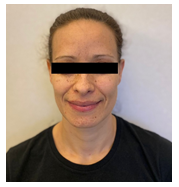
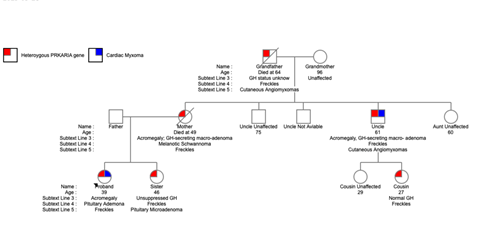
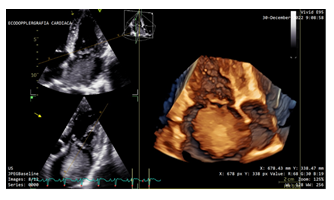
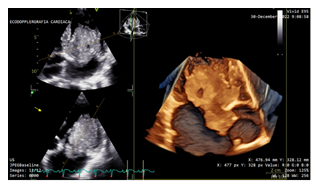
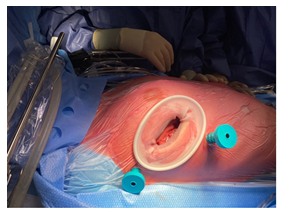
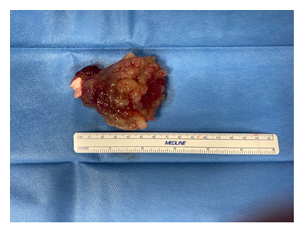

 Impact Factor: * 3.1
Impact Factor: * 3.1 CiteScore: 2.9
CiteScore: 2.9  Acceptance Rate: 11.01%
Acceptance Rate: 11.01%  Time to first decision: 10.4 days
Time to first decision: 10.4 days  Time from article received to acceptance: 2-3 weeks
Time from article received to acceptance: 2-3 weeks 
